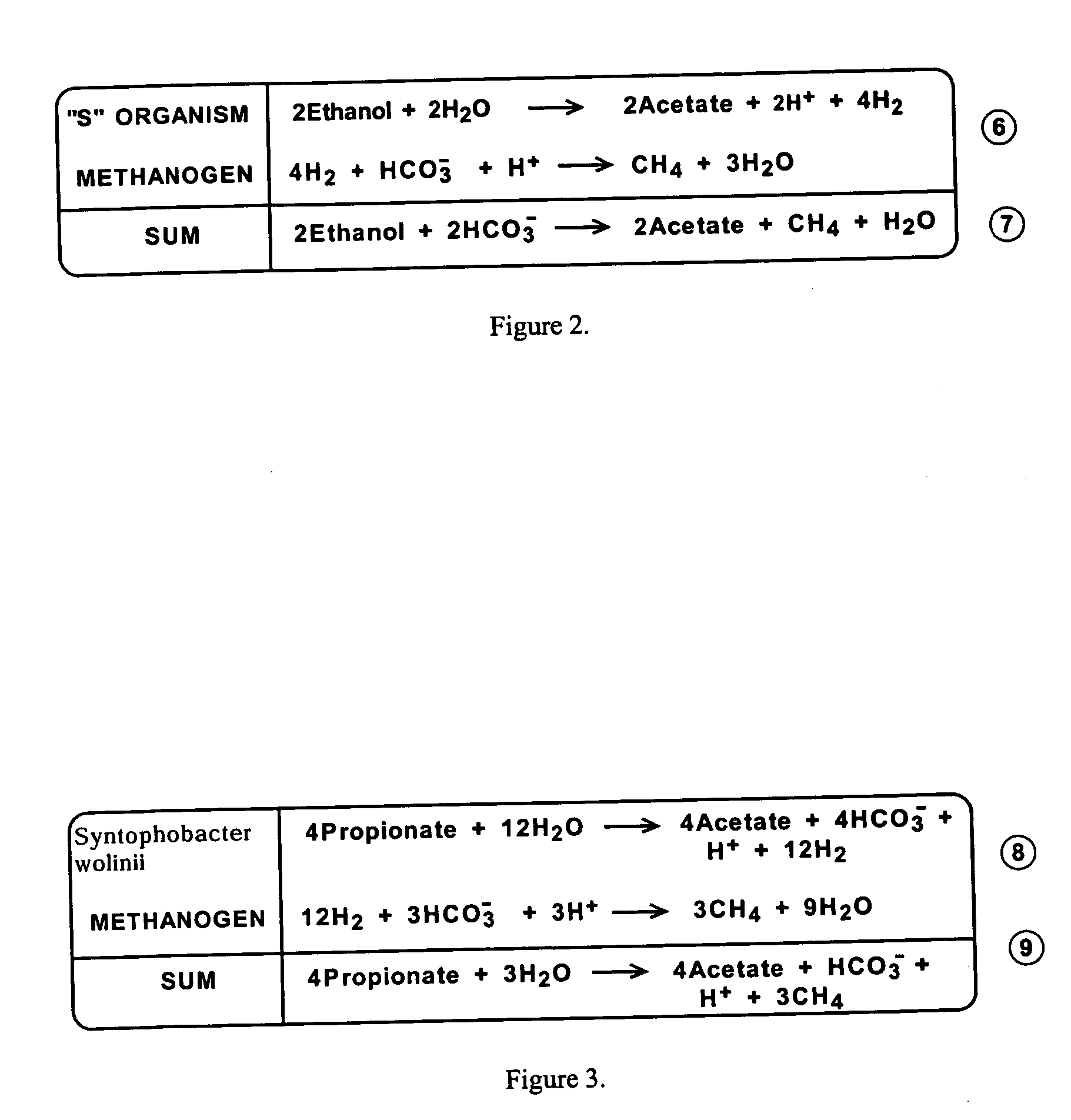Method of generating and recovering gas from subsurface formations of coal, carbonaceous shale and organic-rich shales
a technology of carbonaceous shale and subsurface formation, which is applied in the field of generating and recovering gas from subsurface formations of coal, carbonaceous shale and organic-rich shales, can solve the problems of limited large cavity and fracture system in the subsurface, and inability to disclose economic and environmental benefits of gas recovery from naturally existing subsurface formations, etc. , to achieve the effect of increasing natural gas
- Summary
- Abstract
- Description
- Claims
- Application Information
AI Technical Summary
Benefits of technology
Problems solved by technology
Method used
Image
Examples
example 1
[0060] Coal geometry and present-day in situ stress direction favor the application of horizontal injection well bioconversion. The subbituminous-rank coal seems already contain secondary biogenic gases based on isotopic analysis of gas samples and low gas contents. A horizontal well with laterals, such as shown in FIGS. a and 9, may be drilled and coal cuttings collected to analyze the types of bacteria that are present in the reservoir. Following completion and swabbing of the well, a bacterial consortia obtained from a commercial firm may be injected under pressure along with molasses and other nutrients. Monitoring wells would indicate that methane and carbon dioxide are being generated from the coal beds and that gas contents are increasing slightly. Hole core and water samples may be collected from monitoring wells and sent to the laboratory for comparison with the bacterial consortia samples obtained when drilling the horizontal well. Coal maceral analyses may be performed to...
example 2
[0062] Shale samples and water samples from a test well drilled through a thick, fractured, organic-rich shale would be analyzed for total organic carbon (TOC) and maceral analyses and evaluated for the presence of secondary biogenic gases and bacteria. The thermal maturity and type of organic mater (in this example, Type I or lacustrine / lake) and the presence of an acceptable fracture network would indicate that bioconversion of the shale is possible. The relatively shallow depths, and great thickness of the shale indicate that only a relatively small percentage of the organic matter contained in the shale needs to be converted into methane to make the enhanced shale recovery economically viable.
[0063] Based on laboratory and detailed electric log correlations that delineate the lateral and vertical extent of high in situ TOC contents, a series of wells would be drilled and fracture stimulated Bacteria and nutrients would be injected under pressure to transport the bacteria deep in...
example 3
[0065] Carbon dioxide and carbon monoxide removed from the waste stream of coal-powered electric plants would be transported to the bioconversion site via a pipeline system and injected into highly permeable coal beds located near a coal mine and power generation station. The bioconversion site would be located based on economic considerations and the coal beds in which the carbon dioxide and carbon monoxide are to be injected. Production wells would be drilled downdip and along strike from injector wells.
[0066] A carefully selected bacterial consortia, that includes commercial bacteria, naturally occurring bacteria from the coal reservoir, and genetically engineered bacteria, as well as nutrients could be injected into the coal beds following the sequestration of carbon dioxide and carbon monoxide. The bacteria and nutrient mixture would be injected into the naturally occurring fracture and cleat system following hydraulic fracturing of the wells. In this example, periodic pressure...
PUM
 Login to View More
Login to View More Abstract
Description
Claims
Application Information
 Login to View More
Login to View More - R&D
- Intellectual Property
- Life Sciences
- Materials
- Tech Scout
- Unparalleled Data Quality
- Higher Quality Content
- 60% Fewer Hallucinations
Browse by: Latest US Patents, China's latest patents, Technical Efficacy Thesaurus, Application Domain, Technology Topic, Popular Technical Reports.
© 2025 PatSnap. All rights reserved.Legal|Privacy policy|Modern Slavery Act Transparency Statement|Sitemap|About US| Contact US: help@patsnap.com



